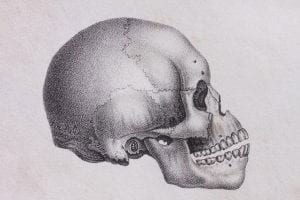Craniosynostosis
What is craniosynostosis?
Craniosynostosis is a birth defect in which one or more of the fibrous joints between the bones of the baby’s skull close prematurely, before it has been fully formed. However, brain growth still continues, giving the head a misshapen appearance. There are several types of craniosynostosis:- Sagittal: Premature fusion of the sagittal suture that runs from the front to the back at the top of the skull forces the head to grow long and narrow. The most common type of craniosynostosis.
- Coronal: Premature fusion of one of the coronal sutures (unicoronal) that run from each ear to the top of the skull may cause the baby’s forehead to flatten on the affected side and bulge on the unaffected side. It also leads to turning of the nose and elevation of the eye socket on the affected side.
- Metopic: The metopic suture runs from the top of the bridge of the nose up through the midline of the forehead to the anterior fontanel or soft spot and the sagittal suture. Premature fusion gives the forehead a triangular appearance and widens the back part of the head.
- Lambdoid: Involves the lambdoid suture, which runs across the skull at the back of the head. It may cause one side of the baby’s head to appear flat, one ear to be higher than the other ear and tilting of the top of the head to one side. The rarest type of craniosynostosis.
What are the symptoms of craniosynostosis?
The following symptoms are characteristic of craniosynostosis:- A misshapen skull, with the shape depending on which of the sutures are affected
- An abnormal feeling or disappearing fontanel on the baby’s skull
- Development of a raised, hard ridge along affected sutures
- Slow or no growth of the head as the baby grows
What causes craniosynostosis?
The exact cause of craniosynostosis is currently unknown, but it is suspected to be related to other genetic disorders, such as Pfeiffer syndrome or Crouton syndrome, which affect a baby’s skull development.How is craniosynostosis diagnosed?
A complete physical examination, imaging studies like a CT scan, and genetic testing can confirm a diagnosis of craniosynostosis.What are the available treatments for craniosynostosis?
There is currently no cure for craniosynostosis, but treating the symptoms of the disease prove to be largely effective. For mild cases of craniosynostosis, treatment is not needed. In other cases, a doctor may recommend a specially molded helmet to help reshape the baby’s head, but surgery to correct the abnormal head shape and relieve brain pressure is the primary treatment.Where can I find out more about craniosynostosis?
Craniosynostosis Articles

Study of the Week: Nearly a Fifth of Sickle Cell Disease Patients May Develop Craniosynostosis
James Moore
December 12, 2022
Read More »

An Estimated 20% of Children with SCD Develop Craniosynostosis
Jessica Lynn
December 9, 2022
Read More »


Craniosynostosis: An Operation Saved His Brain from Being Crushed
Rose Duesterwald
April 14, 2022
Read More »

Baby Successfully Treated for Craniosynostosis After Difficult Pregnancy and Birth
Alyssa Stevens
November 22, 2021
Read More »


Study: Understanding the Development of Craniosynostosis
Kendall Mason
September 9, 2021
Read More »

Woman Runs Craniosynostosis Fundraiser for Cranio Ribbons Ireland
Jessica Lynn
June 3, 2021
Read More »



